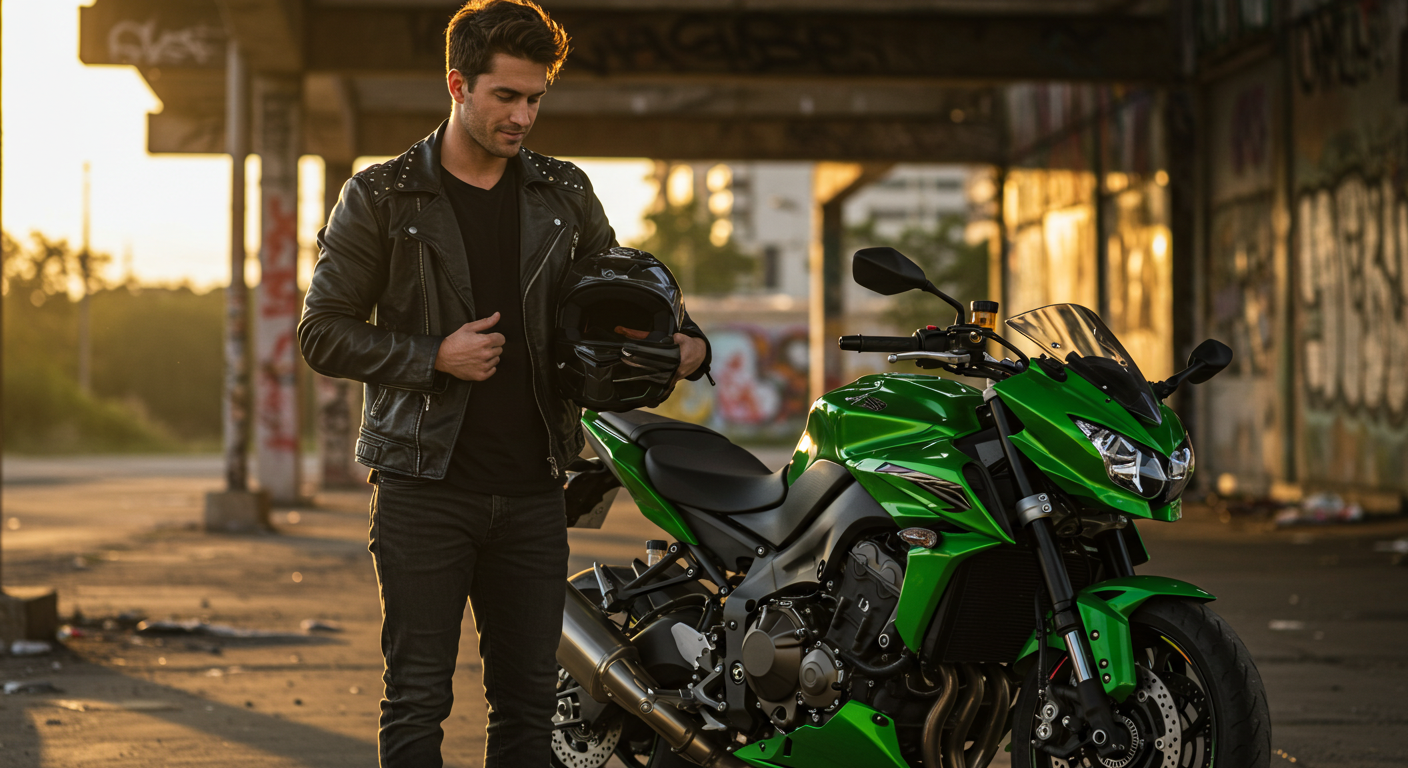Introduction: Motorcycle Rider Ego and the Open Road
There’s something powerful about twisting the throttle and hearing the roar of a 1000 CC engine. It gives you control, confidence—and sometimes, a dangerous ego. In this deep-dive from GHC Sportswear, we explore the psychology behind motorcycle rider ego, where it comes from, why it grows, and what riders (and the community) can do to balance pride with responsibility.

1. What Is Motorcycle Rider Ego?
The term motorcycle rider ego refers to the inflated sense of skill, dominance, or invulnerability that some riders develop. This attitude can manifest in many ways:
- Refusing to wear safety gear
- Ignoring traffic laws
- Showing off in groups or urban settings
- Dismissing advice or constructive criticism
While confidence is essential on two wheels, ego without self-awareness can be dangerous—not just for the rider but for everyone around them.
2. The Roots of Motorcycle Rider Ego
Ego isn’t born on the bike—it’s built over time through:
- Accumulated riding experience
- Admiration or validation from peers
- Social media exposure
- Misinterpreted skill level
Ironically, the more near-misses a rider survives, the more bulletproof they often feel.
“I’ve done this a thousand times”
Confidence from repetition becomes overconfidence when risk is minimised in the rider’s mind.
3. Helmet Off, Ego Out
There’s a stereotype (and a reality) that the moment a helmet comes off, the ego comes out. You’ll see it in riders who:
- Brag about illegal speeds
- Downplay crashes
- Judge others’ gear choices
- Look down on new or cautious riders
This isn’t confidence it’s unchecked motorcycle rider ego that clouds judgment and creates a toxic riding environment.
4. How Ego Endangers Riders
Ego can be more dangerous than weather, road hazards, or even poorly maintained bikes.
Common outcomes of ego-driven riding:
- Riding beyond skill level
- Tailgating or risky overtaking
- Ignoring fatigue or bad conditions
- Refusing to admit mistakes
Every experienced rider knows: you stop learning the moment you think you know it all.
5. The Social Media Effect
Instagram and YouTube have fueled an ego epidemic. Wheelies on the highway, no-gear vlogging, and “look at me” stunts rack up likes but teach new riders the wrong lessons.
Influences vs. instructors
The difference? One seeks applause. The other prioritizes growth.
Motorcycle rider ego gets amplified when the rider feels seen and celebrated for reckless behaviour.
6. Group Rides: A Breeding Ground for Motorcycle Rider Ego
In group rides, riders often feel pressured to:
- Keep up with the fastest
- Show off at intersections
- Take risks to impress others
Instead of focusing on safety and camaraderie, ego takes the wheel.
Signs of ego in group settings:
- Ignoring ride leaders
- Mocking slower riders
- Excessive revving or risky lane changes
7. Gender and Rider Ego
While motorcycle rider ego can show up in all genders, it often plays out differently:
- Men may display overconfidence and aggression.
- Women might overcompensate to gain credibility in male-dominated groups.
Acknowledging these dynamics helps build a more inclusive riding culture where everyone can grow.
8. Recognizing Ego in Yourself
You might be battling motorcycle rider ego if:
- You never watch riding tutorials anymore
- You dismiss other riders’ input
- You believe gear is optional “because you’re careful”
- You find yourself needing to win every time
Healthy check-in: Ask yourself:
“Am I riding for love of the road—or for love of being seen?”
9. Ego Recovery: Riding with Humility
Recovering from motorcycle rider ego doesn’t mean becoming timid—it means becoming wise.
Steps to reset:
- Ride with mentors, not just peers
- Take an advanced safety course
- Celebrate learning, not risk-taking
- Lead by example for new riders
The most respected riders aren’t loud. They’re consistent, safe, and helpful.
10. Gear as a Humility Check
Ironically, riders with massive egos often ditch the very gear that protects them.
At GHC Sportswear, we believe gear is not just protection—it’s a mindset:
- Full-face helmets keep your ego (and head) intact
- Armoured jackets say “I’m smart, not scared”
- Gloves remind you that caution is strength
Wearing proper gear is the opposite of fear—it’s proof you value the ride and yourself.
11. Culture Shift: Redefining Cool
We can rewrite the narrative:
- Let’s make humility heroic
- Let’s celebrate gear, safety, and skill over showmanship
- Let’s support each other in evolving past ego
The best riders don’t ride to prove something. They ride to feel something.
Conclusion: Ego Kills. Humility Rides.
Motorcycle rider ego can be exhilarating—but it’s often a mask for fear, insecurity, or a need for validation. At GHC Sportswear, we encourage riders to embrace the thrill, the freedom, and the lifestyle—but to leave ego at the garage door.“The road doesn’t care how cool you look. It only cares how prepared you are.”
- Ride smart.
- Ride safe.
- Ride humble.
